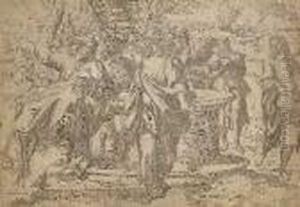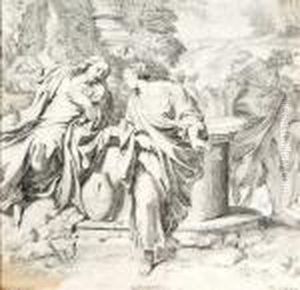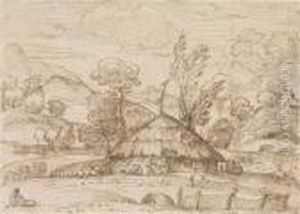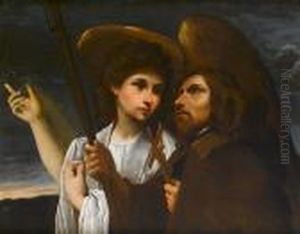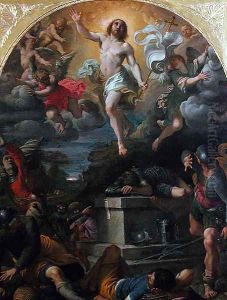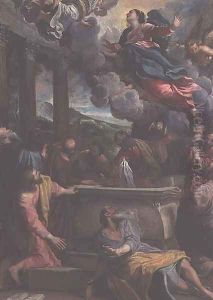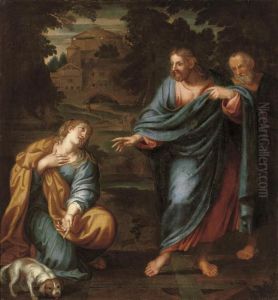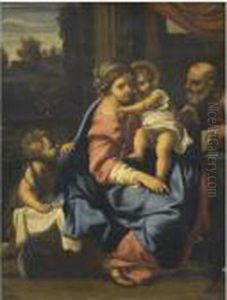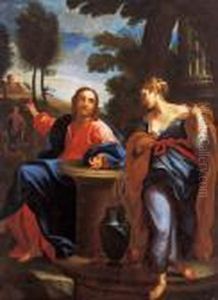





Cristo E La Samaritana Al Pozzo
-
About Reproduction
Discover the allure of art with our faithful reproduction of "Cristo E La Samaritana Al Pozzo", originally brought to life by the talented Annibale Carracci. Unlike posters or prints, our hand-painted oil painting breathes an unique sense of depth and texture into your space. Every detail, every stroke, and every texture is meticulously recreated, paying the perfect homage to Annibale Carracci and his artistic vision.
Owning this piece is more than just decoration - it's a statement of your refined taste in art. Let the vibrant colors and intricate details of this replica serve as a daily reminder of the beauty in our world. Elevate your decor and appreciate the richness of art with our replica of this masterpiece.
-
Painting Description
"Cristo e la Samaritana al pozzo" (Christ and the Samaritan Woman at the Well) is a renowned oil painting by the Italian Baroque artist Annibale Carracci, dating from circa 1595. This work is considered one of Carracci's significant contributions to religious art and reflects the Counter-Reformation's emphasis on clear, didactic, and emotionally engaging narratives. The painting depicts the biblical story from the Gospel of John (4:5–26), where Jesus, while traveling through Samaria, stops at Jacob's well and speaks with a Samaritan woman, revealing his identity as the Messiah and breaking with the social norms of the time that discouraged Jews from interacting with Samaritans.
Carracci's interpretation of this encounter is celebrated for its humanistic approach and the masterful use of chiaroscuro to enhance the spiritual and emotional intensity of the scene. The composition is balanced and harmonious, with Jesus positioned at the center, serving as a moral and visual anchor in the dialogue. The Samaritan woman, depicted with a gesture of surprise and engagement, represents a transformative moment of recognition and faith. The landscape and figures in the background complement the central narrative, providing context and depth to the scene.
The painting is part of Carracci's mature period, which is characterized by a synthesis of the naturalism of the Venetian school, the dynamism of the Florentine tradition, and the classicism of Roman art. "Cristo e la Samaritana al pozzo" exemplifies Carracci's skill in blending these influences to create a work that is both innovative and reflective of the artistic trends of the late 16th century.
Annibale Carracci (1560–1609), along with his brother Agostino and cousin Ludovico, played a pivotal role in the development of the Baroque style in painting. The Carracci family founded the Accademia degli Incamminati in Bologna, which was instrumental in promoting the Baroque aesthetic that emphasized movement, vivid contrasts, and emotional intensity. Annibale's work, in particular, is noted for its departure from the mannerist style prevalent in the late Renaissance, moving towards a more realistic portrayal of subjects and a greater emphasis on narrative clarity.
"Cristo e la Samaritana al pozzo" remains an important work in the oeuvre of Annibale Carracci and continues to be studied for its artistic and historical significance. The painting is housed in the Pinacoteca di Brera in Milan, Italy, where it is accessible to the public and remains a testament to Carracci's enduring legacy in the history of art.
-
Lead Time & Shipping
When you order this oil painting replica, it typically takes 2-3 weeks to paint. If the artwork is more complex, it might need a little more time to ensure the best quality. Once it's ready, we'll send you a photo for your approval. After you give the green light, we'll ship it to you for free.
-
Return & Refund
We believe in the quality of our hand-painted oil painting reproductions, and your satisfaction is our priority. If for any reason, you are not completely satisfied with your purchase, we offer a 45-day return policy. You can return your artwork within 45 days of receipt and receive a full refund. Please note that the artwork must be returned in the original packaging and in the same condition as it was received.





